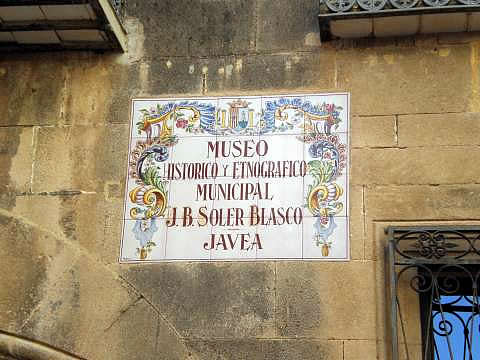|
Guided Walk to the Sequia de la Noria and Saladar
Saturday 20 February 2016 at 11.00 Meet outside the restaurant Socco, with parking near to Mas y Mas, in el Arenal We know that fishing has always been an important commercial and social activity in Xàbia. Amadeus Ros gave us an interesting talk on the subject last year. Before the days of refrigeration it was still necessary to preserve the fish. So how was it done? By using salt, but where did the salt come from, from Roman times until the early modern period? Joaquim Bolufer and Josep Castelló will guide us along the coast from the Arenal to see the channels dug from the Tosca stone to allow the water from the sea to be sent to the salt pans of the Saladar. We will continue our walk through the countryside which was once flooded from the sea to produce the salt that preserved the fish. The walk will take approximately 1 hour 30 mins and is on flat ground. There is only one part of the walk which is on rocks, which maybe difficult for some, but there is an alternative route on the road for this short part. You will need walking shoes and we suggest bringing water, and a camera! At the end of the walk we will arrive back at the Arenal. There will be a charge of 5 euros to include a drink and a tapa on our return in Socco restaurant, to allow time to discuss the walk. Numbers for the walk are limited and places will be allocated to the first to register. You can register and pay at the Museum or register online e-mail [email protected] and pay at the venue, on production your membership card. Information will be available on line and at the walk in Valenciano, Castellano and English.
0 Comments
|
ACTIVITIES
Categories |
- Home
- Blogs
-
Projectes
- Premio de Investigación - Formularios de Inscripción
-
Traducciones Translations
>
-
DISPLAY PANELS - GROUND FLOOR
>
- THE STONE AGES - PALAEOLITHIC, EPIPALAEOLITHIC AND NEOLITHIC
- CAVE PAINTINGS (ARTE RUPESTRE)
- CHALCOLITHIC (Copper) & BRONZE AGES
- THE IBERIAN CULTURE (THE IRON AGE)
- THE IBERIAN TREASURE OF XÀBIA
- THE ROMAN SETTLEMENTS OF XÀBIA
- THE ROMAN SITE AT PUNTA DE L'ARENAL
- THE MUNTANYAR NECROPOLIS
- ARCHITECTURAL DECORATIONS OF THE PUNTA DE L'ARENAL
- THE ATZÚBIA SITE
- THE MINYANA SMITHY
- Translations archive
- Quaderns: Versión castellana >
- Quaderns: English versions >
-
DISPLAY PANELS - GROUND FLOOR
>
- Catálogo de castillos regionales >
- Exposició - Castells Andalusins >
- Exposición - Castillos Andalusíes >
- Exhibition - Islamic castles >
- Sylvia A. Schofield - Libros donados
- Mejorar la entrada/improve the entrance >
-
Historia y enlaces
-
Historía de Xàbia
>
- Els papers de l'arxiu, Xàbia / los papeles del archivo
- La Cova del Barranc del Migdia
- El Vell Cementeri de Xàbia
- El Torpedinament del Vapor Germanine
- El Saladar i les Salines
- La Telegrafía y la Casa de Cable
- Pescadores de Xàbia
- La Caseta de Biot
- Castell de la Granadella
- La Guerra Civil / the Spanish civil war >
- History of Xàbia (English articles) >
- Charlas y excursiones / talks and excursions >
- Investigacions del museu - Museum investigations
- Enllaços
- Enlaces
- Links
-
Historía de Xàbia
>
- Social media
- Visitas virtuales
- Tenda Tienda Shop


 RSS Feed
RSS Feed
